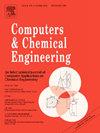Prediction of viscoelastic and printability properties on binder-free TiO2-based ceramic pastes by DIW through a machine learning approach
IF 3.9
2区 工程技术
Q2 COMPUTER SCIENCE, INTERDISCIPLINARY APPLICATIONS
引用次数: 0
Abstract
Ceramic 3D printing has become an increasingly popular manufacturing technique due to its potential to create complex geometries with high precision. However, predicting the printability of ceramic pastes remains a challenge, as it depends on various rheological properties. In this study, we propose a feed-forward deep neural network model that predicts the printability of ceramic pastes based on two suggested criteria, a shear-thinning ability and a gel point greater than Pa. The model is trained on a dataset built from rheological and viscoelastic characterizations of pastes, and validated on a separate test set. Our results show that the proposed learning model achieves small relative error in predicting the gel point of the ceramic pastes, with a mean value of 8.99181 and a standard deviation of 1.812864. This model has the potential to improve the efficiency and quality of ceramic 3D printing by enabling rapid and accurate predictions of paste printability.
通过机器学习方法预测 DIW 不含粘合剂的 TiO2 基陶瓷浆料的粘弹性和可印刷性
陶瓷三维打印技术因其具有高精度创建复杂几何形状的潜力,已成为一种日益流行的制造技术。然而,预测陶瓷浆料的可打印性仍然是一项挑战,因为它取决于各种流变特性。在这项研究中,我们提出了一种前馈式深度神经网络模型,该模型可根据两个建议标准(剪切稀化能力和凝胶点大于 1×103 Pa)预测陶瓷浆料的可印刷性。结果表明,所提出的学习模型在预测陶瓷浆料凝胶点时的相对误差较小,平均值为 8.99181,标准偏差为 1.812864。通过快速准确地预测陶瓷浆料的可打印性,该模型有望提高陶瓷三维打印的效率和质量。
本文章由计算机程序翻译,如有差异,请以英文原文为准。
求助全文
约1分钟内获得全文
求助全文
来源期刊

Computers & Chemical Engineering
工程技术-工程:化工
CiteScore
8.70
自引率
14.00%
发文量
374
审稿时长
70 days
期刊介绍:
Computers & Chemical Engineering is primarily a journal of record for new developments in the application of computing and systems technology to chemical engineering problems.
 求助内容:
求助内容: 应助结果提醒方式:
应助结果提醒方式:


